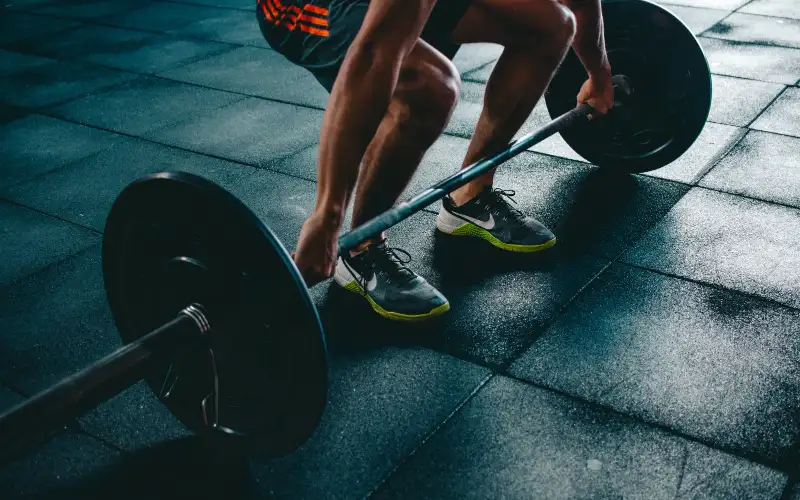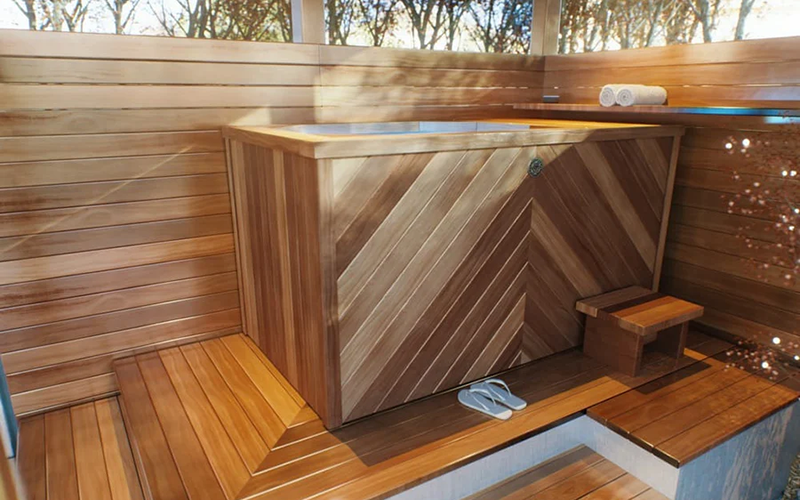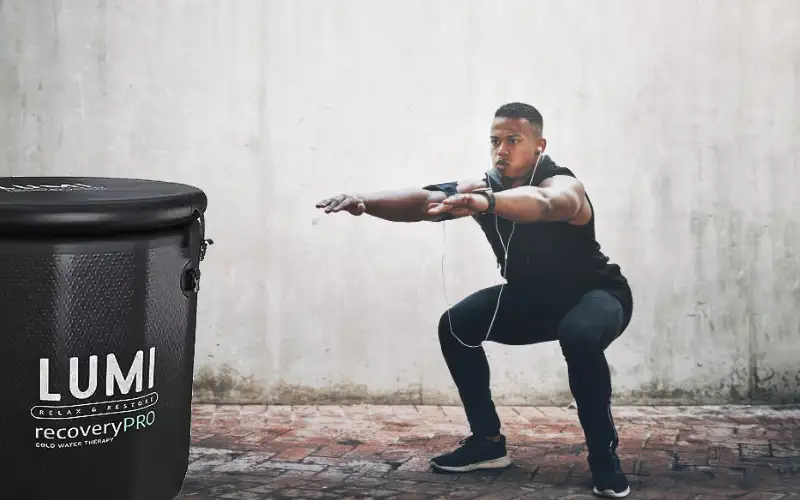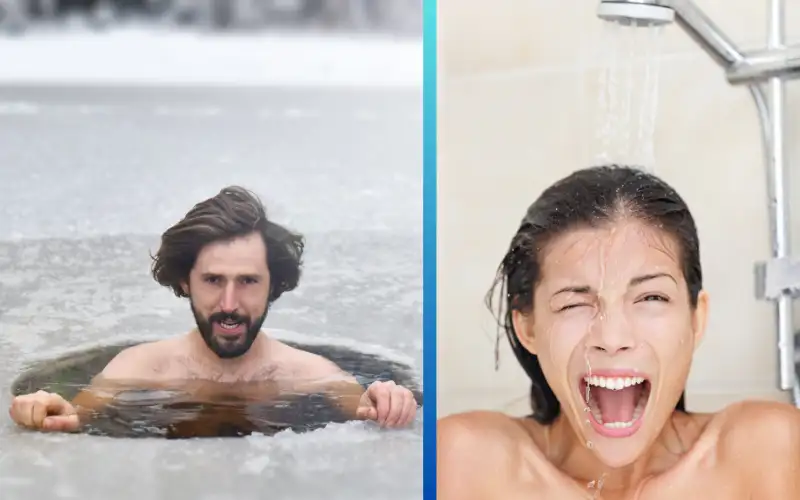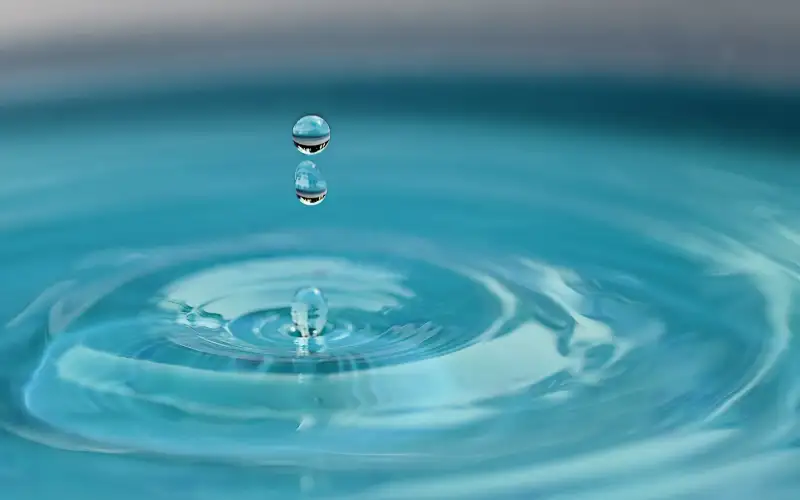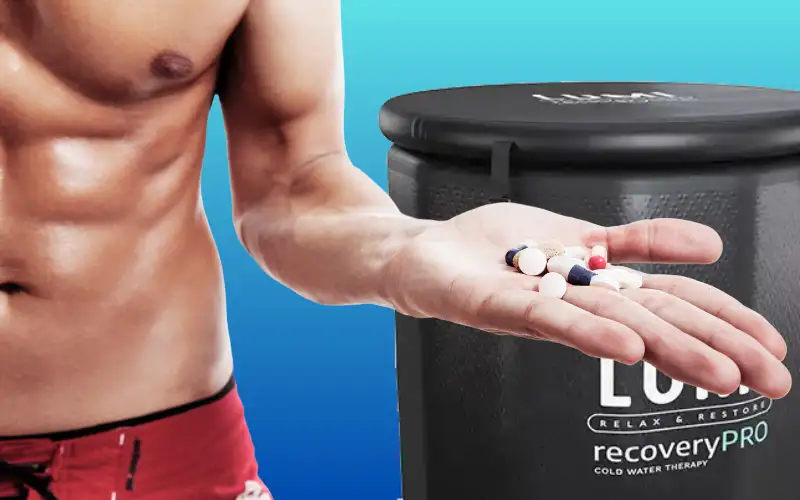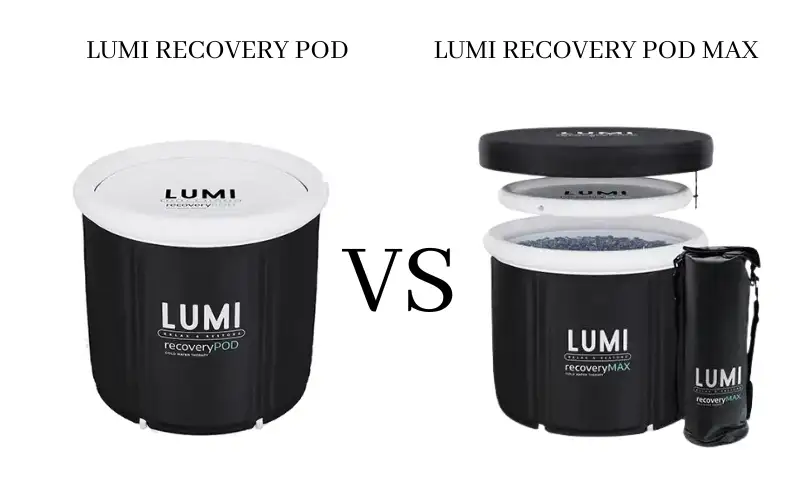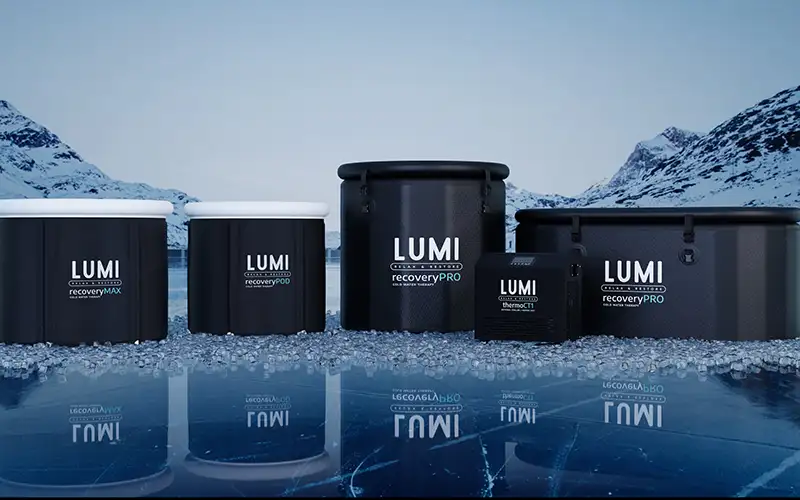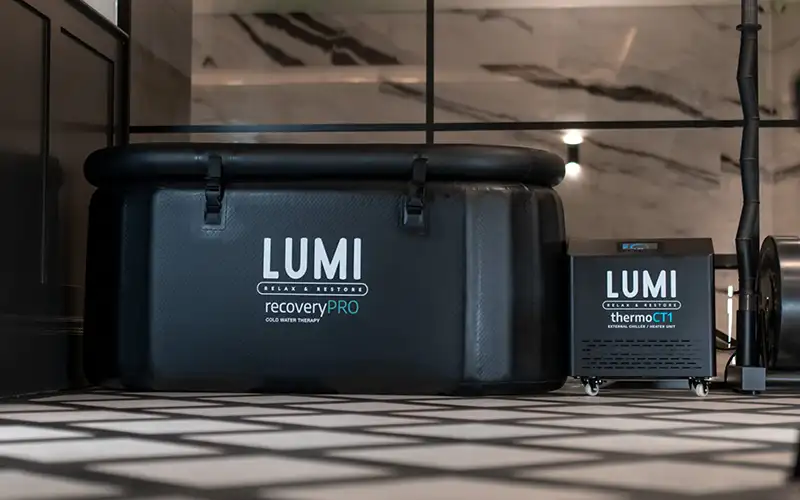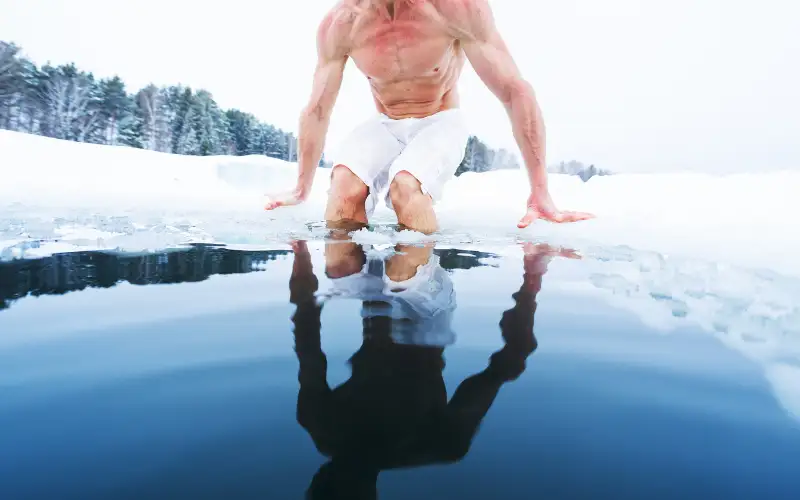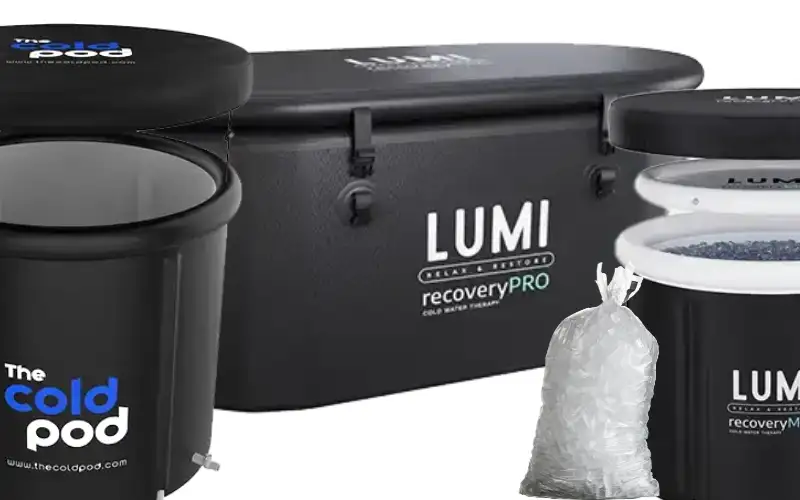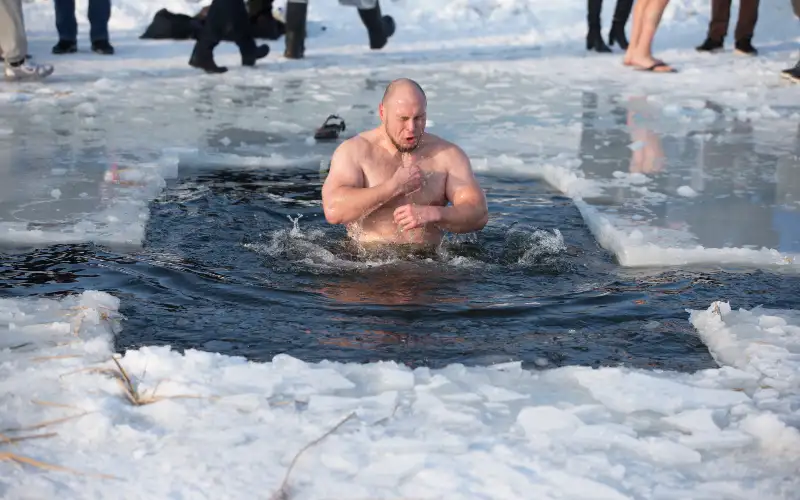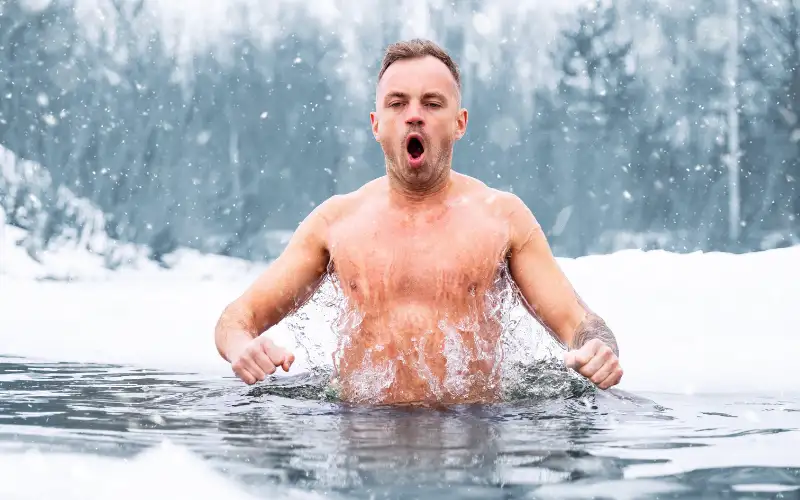Cold plunging, a popular form of cold therapy, has gained significant attention in the fitness community for its potential benefits. Whether it’s cold-water swimming in a lake or the sea, a cold plunge at your gym or an ice bath at home, exposing your body to the cold is becoming increasingly popular. From enhancing circulation and reducing inflammation to promoting recovery and improving mental focus, cold plunges have captured the interest of many fitness enthusiasts. If you’ve ever considered incorporating cold plunges into your workout routine, you’re not alone. The internet is filled with questions and curiosity surrounding this practice.
In this post, we will address the most commonly asked questions about cold plunging and provide insights into the optimal ways to include it in your fitness regimen. Whether you’re a seasoned cold therapy enthusiast or a beginner looking to explore its benefits, we’ve got you covered. So, get ready to dive in as we unravel the secrets of cold plunging and its potential impact on your fitness journey.
World’s coldest ice bath?
If you won’t settle for anything less, you’ll want to read about the world’s only ice bath that generates its own ice and can be kept at 0°C consistently. Read More >
Should I cold plunge before a workout?
Cold plunging before a workout can be beneficial. Taking a cold plunge prior to exercise can help stimulate the nervous system, increase alertness, and enhance blood circulation. It may also promote mental focus and prepare your body for physical exertion. However, individual preferences and responses to cold therapy may vary, so it’s essential to listen to your body and adjust accordingly.
In addition to the immediate effects on the nervous system and alertness, cold plunging before a workout may offer physical benefits such as improved muscle gain and fat loss. The cold exposure during a plunge can activate the body’s brown adipose tissue (BAT), which is responsible for generating heat and burning calories. BAT activation can help boost metabolism and increase the body’s energy expenditure, potentially aiding in weight management and fat loss efforts.
Moreover, cold plunging before a workout can facilitate muscle recovery and enhance performance. The cold temperature helps constrict blood vessels, reducing inflammation and swelling in the muscles. This vasoconstriction effect can alleviate muscle soreness and improve post-workout recovery, allowing you to train more frequently and with greater intensity.
Cold plunging can also enhance circulation, which promotes nutrient and oxygen delivery to the muscles. This increased blood flow can support muscle growth, repair damaged tissues, and enhance overall workout performance. By improving circulation, cold plunging can help maximise the benefits of your exercise routine.
Furthermore, cold therapy before a workout has been suggested to increase the secretion of certain hormones, including norepinephrine, which plays a role in fat mobilisation and metabolism. The elevation of norepinephrine levels may contribute to the breakdown of stored body fat during exercise, potentially aiding in fat loss goals.
It has also been suggested by scientific studies that taking a cold plunge or ice bath before working out can increase testosterone.
However, it’s important to note that while cold plunging before a workout can provide these potential benefits, it should not be considered a substitute for proper training and nutrition. Consistency in your exercise routine, a well-balanced diet, and other factors like sleep and stress management play crucial roles in achieving your fitness goals.
It’s recommended to incorporate cold plunges as a complementary component of a well-rounded fitness regimen rather than relying solely on this method for muscle gain or fat loss. Experiment with incorporating cold plunges into your routine, observe how your body responds, and make adjustments based on your individual needs and goals.
Remember, everyone’s response to cold therapy may vary, so it’s important to find what works best for you. If you have any underlying health conditions or concerns, it’s advisable to consult with a healthcare professional before incorporating cold plunges into your workout routine.
Is it better to do cold therapy before or after a workout?
Both pre and post-workout cold therapy have their advantages. Cold therapy before a workout can help with priming your body, increasing alertness, and enhancing circulation. On the other hand, using cold therapy after a workout can aid in reducing inflammation, muscle soreness, and promoting recovery.
Let’s delve deeper into the advantages and disadvantages of cold therapy before and after a workout, including their effects on muscle gain and fat loss.
Cold Therapy Before a Workout:
Advantages:
Priming the Body: Cold therapy before a workout can serve as a pre-workout ritual, preparing your body for physical exertion. The cold temperature stimulates the nervous system, increasing alertness and mental focus, which can be beneficial for activities requiring concentration and coordination.
Enhanced Circulation: Cold plunging before a workout can improve blood circulation throughout the body. This increased circulation delivers oxygen and nutrients to the muscles, enhancing their performance and reducing the risk of fatigue.
Muscle Activation: The cold exposure can activate the muscles, making them more responsive and ready for the upcoming workout. This can potentially lead to better muscle recruitment and improved exercise performance.
Disadvantages:
Reduced Muscle Power: Some studies suggest that cold exposure before intense workouts, especially strength training, may lead to a temporary decrease in muscle power. Cold temperatures can affect the muscle’s ability to generate force, potentially compromising your performance during high-intensity exercises.
Potential Injury Risk: Cold therapy may temporarily decrease joint flexibility and range of motion. This can increase the risk of injury if proper warm-up exercises are not performed before engaging in intense physical activity.
Effect on Muscle Gain and Fat Loss:
Cold therapy before a workout may indirectly contribute to muscle gain and fat loss through its impact on circulation, metabolism, and exercise performance. By increasing blood flow and nutrient delivery to the muscles, it can support muscle growth and repair.
Additionally, the activation of brown adipose tissue (BAT) during cold exposure may increase metabolic rate and calorie expenditure, potentially aiding in fat loss efforts.
However, the direct impact of cold therapy on muscle gain and fat loss may be relatively modest compared to other factors like training intensity, diet, and overall lifestyle.
Cold Therapy After a Workout:
Advantages:
Reduced Inflammation: Cold therapy after a workout can help mitigate exercise-induced inflammation and muscle damage. The cold temperature constricts blood vessels, reducing swelling and inflammation, which may help alleviate muscle soreness and facilitate faster recovery.
Enhanced Recovery: Cold plunging post-workout can help promote recovery by enhancing circulation and flushing out metabolic waste products from the muscles. This can potentially speed up muscle repair, reduce delayed onset muscle soreness (DOMS), and enable you to bounce back more quickly for your next training session.
Mental Relaxation: Cold therapy after a workout can have a calming and refreshing effect on the mind. It may help reduce stress, promote relaxation, and enhance overall well-being, creating a positive mindset for future workouts.
Disadvantages:
Delayed Cooling Down: If you opt for cold therapy immediately after a workout, it may delay the natural cooling down process of your body. This can hinder the body’s ability to return to its normal state and slow down the transition from exercise to rest.
Reduced Acute Training Adaptations: Some research suggests that immediate cold exposure after exercise may dampen the body’s natural acute training adaptations, such as the release of certain growth factors and hormones. This could potentially impact long-term muscle growth and strength gains.
Effect on Muscle Gain and Fat Loss:
Cold therapy after a workout primarily aids in muscle recovery and reducing inflammation. By mitigating inflammation, it may indirectly support muscle growth and fat loss by allowing for more frequent and intense training sessions. However, its direct impact on muscle gain and fat loss may be limited compared to factors such as nutrition, overall caloric balance, and the quality of your exercise program.
Conclusion:
Deciding whether to use cold therapy before or after a workout depends on your personal preferences, goals, and individual response to cold exposure. Cold therapy before a workout may provide advantages such as increased alertness, enhanced circulation, and improved muscle activation. However, it may also have disadvantages, including a temporary decrease in muscle power and a potential risk of injury.
When it comes to its effects on muscle gain and fat loss, cold therapy before a workout may indirectly support these goals through improved exercise performance, enhanced nutrient delivery, and increased metabolic rate.
On the other hand, cold therapy after a workout offers benefits such as reduced inflammation, enhanced recovery, and mental relaxation. It can help minimise post-workout muscle soreness, facilitate muscle repair, and promote a state of relaxation and well-being. However, immediate cold exposure after exercise may delay the body’s natural cooling down process and potentially dampen acute training adaptations.
In terms of muscle gain and fat loss, the effects of post-workout cold therapy are, again, largely indirect. Cold therapy after a workout aids in recovery, allowing for more frequent and intense training sessions, which can contribute to muscle gain and fat loss over time.
It’s important to note that the impact of cold therapy on muscle gain and fat loss should be seen as a complement to a well-rounded fitness routine that includes proper nutrition, regular exercise, and a healthy lifestyle. Cold therapy alone is unlikely to be the sole determining factor in achieving significant muscle gain or fat loss. Focus on overall training intensity, progressive overload, balanced nutrition, and consistency to maximise your results.
Ultimately, the decision of whether to incorporate cold therapy before or after a workout should be based on personal preference, individual response, and the specific goals you want to achieve. Experimentation and listening to your body are key to finding the optimal approach that works for you.
How long after working out should you do a cold plunge?
The timing of a cold plunge after a workout can vary. While there’s no universally prescribed duration, it’s generally recommended to wait at least 15-30 minutes after your workout to allow your body to cool down naturally before taking a cold plunge. This timeframe allows for optimal recovery and ensures that your body’s physiological processes have reached a stable state.
Does cold plunge before exercise increase testosterone?
While cold plunging before exercise has been speculated to increase testosterone levels, the research on this specific aspect is limited. However, cold exposure has been associated with numerous benefits, including enhanced cognitive function, improved mood, and increased metabolism. While the impact on testosterone levels may not be well-established, the overall benefits of cold plunging make it a worthwhile addition to your routine.
How long should a cold plunge be?
The duration of a cold plunge can vary depending on personal preference and tolerance. Beginners may start with shorter durations, such as 1-2 minutes, gradually increasing the time as they become more comfortable. Some people prefer longer cold plunges, lasting up to 20 minutes. It’s crucial to pay attention to your body’s response and not exceed your limits. Experiment with different durations to find the sweet spot that works best for you.
Why is a 2-minute cold plunge good for you?
A 2-minute cold plunge can provide several benefits for your body, making it an optimum duration for cold therapy. Here’s why:
Hormonal Response: Cold exposure triggers the release of various hormones and neurotransmitters in the body, including endorphins, adrenaline, and noradrenaline. These hormones contribute to a range of positive effects such as improved mood, increased alertness, and enhanced mental focus. Research suggests that these hormonal responses typically peak within the first 2 minutes of cold exposure. By keeping the duration at 2 minutes, you can maximise the release of these beneficial hormones.
Vasoconstriction and Blood Circulation: Cold plunging constricts blood vessels, reducing inflammation and promoting efficient blood circulation. During the initial phase of cold exposure, blood vessels narrow, redirecting blood flow towards vital organs and tissues to maintain core body temperature. This vasoconstriction effect helps reduce swelling and inflammation in the muscles. The 2-minute duration allows enough time for this vasoconstriction to occur and promote the desired circulatory benefits.
Metabolic Rate: Cold exposure can increase metabolic rate as the body expends energy to generate heat and maintain its core temperature. While the metabolic effects of cold exposure can continue beyond the initial 2 minutes, research suggests that the peak metabolic response usually occurs during this period. This heightened metabolic rate can potentially contribute to calorie burning and weight management efforts.
Tolerance and Adaptation: Cold therapy, including cold plunges, involves subjecting the body to cold temperatures that may be uncomfortable at first. Starting with shorter durations, such as 2 minutes, allows your body to gradually adapt to the cold exposure. It gives you an opportunity to build tolerance over time and minimise the risk of overexertion or discomfort.
Convenience and Feasibility: A 2-minute cold plunge is relatively easy to incorporate into your routine, even on busy days. It strikes a balance between providing sufficient exposure to cold therapy benefits and being a manageable duration for most individuals. This makes it more feasible to consistently include cold plunges in your fitness regimen, maximising the potential advantages without requiring excessive time commitments.
It’s important to note that individual tolerance and preferences may vary. Some individuals may prefer shorter durations initially, while others may gradually increase the duration to 2 minutes or beyond as they adapt to the cold exposure. It’s crucial to listen to your body, adjust accordingly, and find the duration that works best for you while still experiencing the benefits of cold plunging.
Why am I so exhausted after a cold plunge?
Feeling exhausted after a cold plunge is not uncommon. Cold immersion activates the sympathetic nervous system, which can lead to increased alertness and energy expenditure. Additionally, the body’s effort to maintain its core temperature during cold exposure requires energy, which can contribute to a sense of fatigue afterward. However, this fatigue is often temporary and can be followed by a surge in energy levels and improved mood.
What time of day is best for a cold plunge?
The best time for a cold plunge depends on your personal schedule and goals. Some people prefer to start their day with a refreshing cold plunge to invigorate their body and mind, while others find it beneficial in the evening to aid in relaxation and promote restful sleep. Ultimately, it’s a matter of personal preference. However, it’s worth noting that taking a cold plunge too close to bedtime may increase alertness and make it more challenging to fall asleep for some people.
Is it okay to cold plunge every day?
Cold plunging every day may lead to diminished effects over time as the body adapts to the cold stimulus. It’s important to find an optimal frequency that balances the benefits and potential drawbacks. While daily cold plunges can provide consistent benefits, excessive exposure to cold temperatures without considering rest and recovery may be overdoing it and could compromise overall performance and recovery.
A general guideline for optimal cold plunging frequency is 2-3 times per week. This allows for adequate exposure to the cold stimulus while providing ample time for the body to recover and adapt between sessions. However, individual preferences and responses to cold therapy may vary, so it’s important to listen to your body.
Enjoy Cold Plunges?
Don’t forget to have something to warm up with when you get out. Dryrobe waterproof changing robes are great, but they can be expensive. Check out our Dryrobe alternatives here >>
Cold plunging can be a powerful addition to your fitness regimen, offering a range of benefits for both mind and body. Whether you choose to cold plunge before or after a workout, aim for a 2-minute duration, or prefer a specific time of day, it’s crucial to find what works best for you. Remember to start slowly, be mindful of your body’s response, and make adjustments as needed. By incorporating cold plunging wisely and consistently, you can optimise your overall well-being and elevate your fitness journey to new heights.
